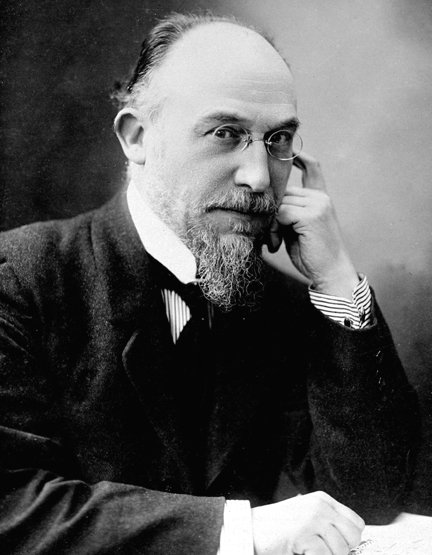Gymnopédie, No. 1 (original version by Erik Satie)
(Edited)
Erik Satie was an influential French pianist and composer from the late 19th and early 20th centuries of Debussy’s generation. He was a pioneer in impressionism, dadaism, minimalism, the theater of the absurd and repetitive music. He was an eccentric person and wrote for different magazines, such as Dadaist 391 and Vanity Fair. His music has a somber character and its appeal consists in its lack of fidelity to any aesthetic. His melodies are melancholic, his moods humorous and his compositions brief. Born in Honfleur in 1866, in Lower Normandy, at the age of six he received his first piano lessons from a local organist called Vinod. When he was twelve years old his grandmother died and he and his brother went to live with their father to Paris.

He then enrolled at the conservatory of that city, where he was disqualified to play music by his teachers and dismissed three years later. In 1885 he was readmitted to the conservatory, but finding that he hadn’t made any progress, he decided to enter the military service. However, he didn’t like life in the army, so after a few months he infected himself deliberately with bronchitis and was licensed. In 1886 his first works Elégie, Trois Mélodies and Chanson were published. In 1887 he began playing the piano at cabarets in Paris, such as Le Chart Noir and L’auberge du clou, where he met Claude Debussy, with whom he enjoyed a close friendship. In 1989 he edited his Gimnopedias, Gnossiennes and other series of piano works and listened to music from Eastern Europe at the Universal Exposition in Paris.

In 1891 Satie became composer and chapel master of a rosicrucian order, and wrote mystical pieces, such as Sonneries de la Rose Croix, Le Fils des Etoiles and Salut Drapeau!. In 1893 he met the young Maurice Ravel, in whose early works he had considerable relevance. That same year he had a short sentimental relationship with Suzanne Valadon, an impressionist painter, and composed his Gothiques Danses. In 1897 he wrote the first two series of Pièces froides and from 1899 he was a cabaret pianist and adapted more than a hundred popular works, such as Le Picadilly, La Diva de l'Empire, Je te veux, Poudre d’or, Californian Legende and Tendrement. Also, in 1903 he composed his own work Troce morceaux in forme de poire.
0
0
0.000

According to the Bible, How does the kingdom of heaven suffer violence as it is written in the Bible? (Part 1 of 4)
(Sorry for sending this comment. We are not looking for our self profit, our intentions is to preach the words of God in any means possible.)
Comment what you understand of our Youtube Video to receive our full votes. We have 30,000 #SteemPower. It's our little way to Thank you, our beloved friend.
Check our Discord Chat
Join our Official Community: https://beta.steemit.com/trending/hive-182074
Your post has been supported and upvoted from the Classical Music community on Steemit as it appears to be of interest to our community. We also support jazz and folk music posts!
If you enjoy our support of the #classical-music community, please consider a small upvote to help grow the support account!
You can find details about us below.
The classical music community at #classical-music and Discord. Follow our community accounts @classical-music and @classical-radio or follow our curation trail (classical-radio) at SteemAuto!
Delegation links: 10SP, 25SP, 50SP, 75SP, 100SP, 150SP, 200SP, 250SP, 500SP, 1000SP